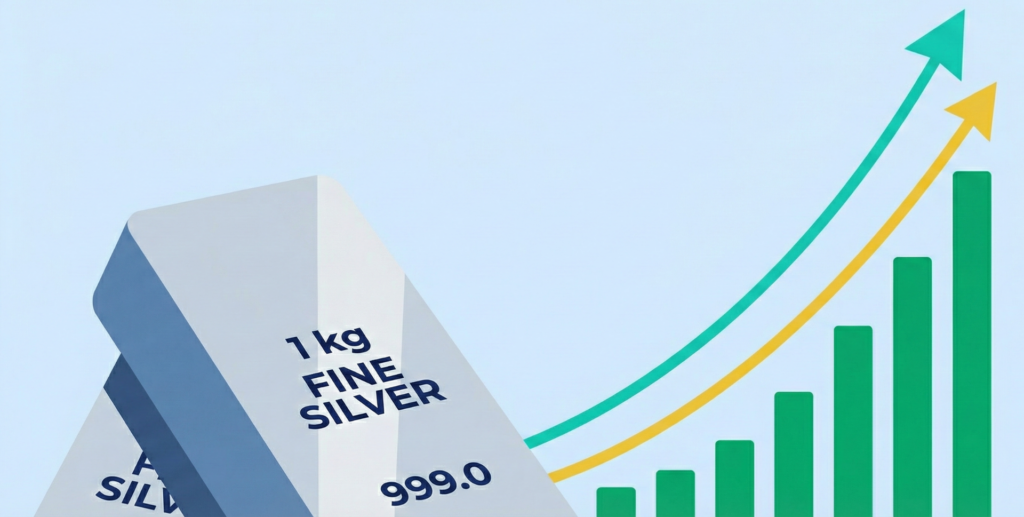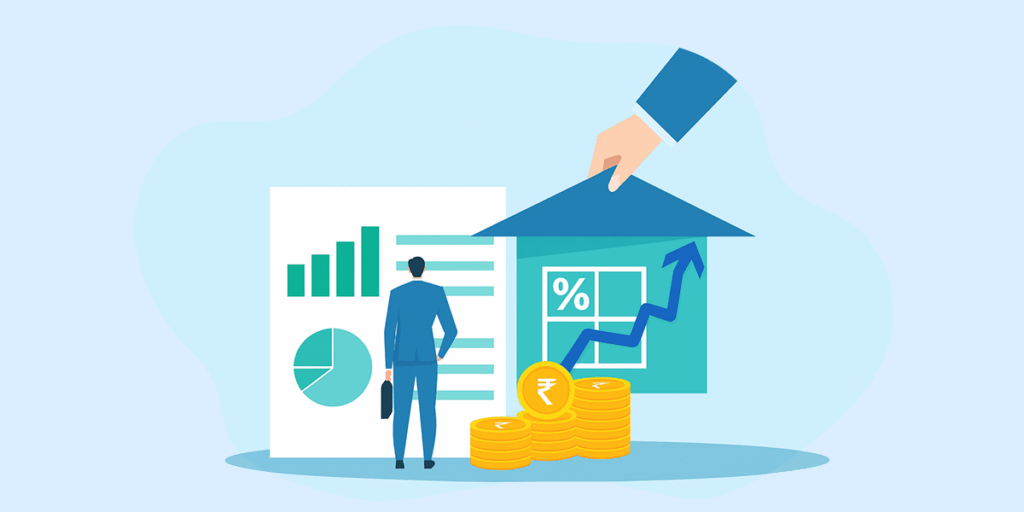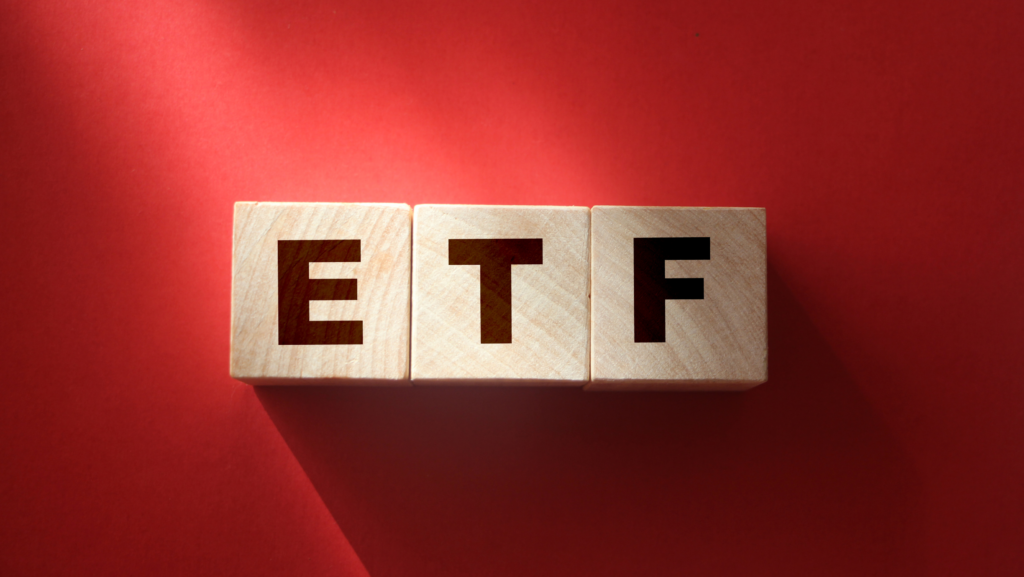Young people in their first job, senior citizens with decent savings, and ace investors with years of experience in the markets: everyone wants to see their savings grow as much as possible. However, for the vast majority of people, not losing their hard-earned money is even more important than growing it.
Thankfully, there is a way to get a relatively good rate of return on your money while also ensuring that it is completely safe – namely, fixed deposits. Fixed deposits strike this balance by offering a better rate of return than ordinary savings accounts while also being insured by the government to the tune of INR 5 lakh per depositor.
Let’s look at fixed deposits in more detail: their types, benefits, rates of return and more.
Table of contents
1. What is a fixed deposit?
2. How does a fixed deposit work?
3. Different types of fixed deposits
4. Features and benefits of fixed deposits
5. The role of fixed deposits in your portfolio
6. Things to consider when investing in fixed deposits
7. Fixed deposit rules that every investor should know
8. Factors that affect fixed deposit interest rates
9. Fixed deposit interest rates in India in 2022
10. Fixed deposits: for when security is paramount
11. Fixed deposit FAQs
1. What is a fixed deposit?
A fixed deposit (FD) is a kind of savings instrument offered by most Indian banks and non-banking financial companies (NBFCs). When you open an FD, you deposit a certain amount of money with a bank or NBFC for a fixed period, known as the ‘tenure’. In exchange for this loss of liquidity, the bank or NBFC offers you a fixed rate of interest over the entire tenure.
The main difference between a normal savings account and an FD is the fact that you cannot freely withdraw money from an FD before the tenure is over. If you wish to withdraw some money from the FD, you will have to pay a penalty. However, as a result of this restriction, the interest rates offered on fixed deposits are almost always higher than those offered on normal savings accounts, making them more attractive as investments or as longer term savings instruments.
2. How does a fixed deposit work?
There are several types of fixed deposits, each of which has specific features. In its simplest form, however, as indicated above, an FD consists of a fixed sum of money that you deposit with a bank or NBFC for a particular tenure, at a fixed interest rate that applies to that deposit for the entirety of the tenure. Once the tenure ends, i.e. at “maturity”, the entire deposit is returned to the depositor, usually with all of the interest accrued (but see below for cases where the interest will already have been withdrawn prior to maturity). If the depositor decides that they want to withdraw their deposit before maturity (referred to as “breaking” an FD), then they have to pay a penalty.
The tenure can vary from seven days to ten years, and the interest rate can vary from 3.5% to around 9%. Generally, the longer the tenure, the higher the interest rate offered. The interest rate can also vary depending on the type of FD. In addition, some institutions might require a minimum amount to be deposited into an FD.
3. Different types of fixed deposits
There are several different types of fixed deposits, with each type being oriented towards a particular demographic or financial goal. The most important types are:
3.1 Standard term deposits
This is the simplest type of FD – a fixed amount of money for a fixed tenure at a fixed interest rate. As discussed above, the interest rate will vary depending on the tenure and the bank/NBFC.
3.2 Senior citizen fixed deposits
As the name suggests, this type of FD provides special benefits for senior citizens (i.e. people older than 60 years of age). As of 2022, there are two main kinds of benefits such FDs provide. The first is that the interest rate is typically 0.25% to 0.50% higher than standard term fixed deposits. The second is that the interest on such an FD is not subject to TDS (tax deducted at source) unless it exceeds INR 50,000 in a year; for comparison, this limit is INR 40,000 for non-senior citizens.
3.3 Tax-saving fixed deposits
A tax-saving FD enables depositors to claim a deduction of up to INR 1.5 lakh under Section 80C of the Income Tax Act. In other words, part or all of the interest gained on such an FD may be tax-exempt. However, such fixed deposits usually have a minimum lock-in period in the range of five years or more.
3.4 Recurring deposits
A recurring deposit is a kind of FD in which a depositor invests a fixed sum every month or every quarter. Each instalment accrues interest for the period for which it was deposited.
3.5 Flexi fixed deposits
When a depositor opens a flexi fixed deposit, they effectively instruct their bank to maintain a specific amount of money in their savings account and transfer any excess into the FD automatically. Conversely, if their savings account balance dips below that pre-specified amount, a portion of the flexi FD will be liquidated so as to bring that balance back up to the appropriate amount.
The interest rate on this type of FD is typically higher than that on a savings account but lower than that on a standard term FD.
3.6 Fixed deposits for non-resident Indians
There are two kinds of fixed deposits that non-resident Indians (NRIs) can invest in: non-resident external (NRE) and non-resident ordinary (NRO). NRE fixed deposits are meant to be used by NRIs earning in a foreign currency. The main benefit of such fixed deposits is that the entire FD amount, including the principal and the interest, is tax-free.
On the other hand, NRO fixed deposits are taxable at an annual rate of 30%, and can receive Indian rupees as well as foreign currencies.
3.7 Corporate fixed deposits
A corporate FD is an FD offered by a corporate entity that is not a bank or NBFC. While the interest rates on such fixed deposits might be higher than those on fixed deposits offered by banks/NBFCs, their risks are also higher. Fixed deposits offered by banks and NBFCs are subject to an insurance cover provided by the Deposit Insurance and Credit Guarantee Corporation (DICGC). In contrast, corporate fixed deposits are not similarly insured. Thus, if the corporate entity offering such an FD were to go bankrupt, there would be no guarantee that the deposited amount will be recovered.
It should be noted that all of the types discussed above can also be classed using two broad umbrella terms, depending on how the interest that is generated is dealt with: cumulative and non-cumulative.
Cumulative fixed deposits
If an FD is a cumulative FD, then the interest generated on the principal amount gets added to the FD amount until maturity. Typically, this interest is compounded on a quarterly or annual basis.
Non-cumulative fixed deposits
If an FD is non-cumulative, then the interest generated on the principal amount is paid out on a regular basis to the depositor. These interest pay-outs can be monthly, quarterly, half-yearly or yearly; however, it should be noted that typically, the interest rate is higher if the gaps between pay-outs are longer.
4. Features and benefits of fixed deposits
As savings instruments, fixed deposits offer several benefits that make them attractive to most kinds of investors. Some of the main ones are:
- The interest rates for fixed deposits are higher than those for savings accounts.
- Fixed deposits are easy to open and renew.
- Once the interest rate for an FD is locked in, it is not affected by subsequent market movements.
- Fixed deposits opened with banks or NBFCs are extremely low-risk, as they are insured.
- Certain institutions offer loans against fixed deposits.
- Non-cumulative fixed deposits can serve as a source of passive income by paying out the interest generated at regular intervals.
- Senior citizens can avail themselves of especially high interest rates with fixed deposits.
5. The role of fixed deposits in your portfolio
Given the features of fixed deposits discussed above, they can serve various beneficial roles in your portfolio. Some such roles are:
- Providing market-proof returns: Given that fixed deposits are not subject to market volatility, they can serve as an excellent way to balance any market-linked investments you might have, such as mutual funds or stocks.
- Achieving short-term financial goals: Since fixed deposits provide a better interest rate than savings accounts, you can use them to reach short-term and near-term financial goals, such as buying a car or going on a vacation, more quickly than if you simply hold your funds in a savings account.
- Keeping your portfolio afloat during market downturns: The interest on an FD will always keep coming in, and this can help compensate for any losses that might be incurred on other, riskier investments.
However, it is important to be mindful of the fact that despite the benefits of FDs, the interest rates associated with them can often be too low to beat inflation. Thus, the security they provide may be offset by low or negative “real returns” (i.e. the returns generated once inflation has been taken into account). In effect, they represent the part of your portfolio that will just about maintain its value over time, without delivering significant real growth (unlike riskier investments like stocks, or ETFs).
6. Things to consider when investing in fixed deposits
We have already seen that there are many different kinds of FDs, and that they are offered by a large number of banks and NBFCs. Thus, due to the large number of choices available, there are several factors that should be taken into consideration when selecting an FD:
- The interest rate: Shop around for the best interest rates
- Minimum amount: Make sure that the minimum amount you need to open an FD is lower than what you intend to deposit
- Maturity date: If you are opening an FD to achieve a specific time-bound goal, then you should make sure that the FD reaches maturity before the date when you will need the FD amount
- Premature withdrawal penalty: You should be aware of what the penalty is for prematurely breaking an FD
- TDS: If the total interest on all your fixed deposits with a given institution exceeds INR 40,000 (INR 50,000 for senior citizens), then the institution will deduct TDS.
The factor that you should pay the most attention to is probably the interest rate, as this is what will make one FD better than another in terms of profitability, all other things being equal.
7. Fixed deposit rules that every investor should know
There are certain rules associated with FDs that every would-be investor should be aware of before investing in them. Some of the most important rules are:
- The interest earned on fixed deposits is taxable, and is charged under the head “Income from other sources”.
- If TDS is deducted for the interest earned on one or more fixed deposits, the TDS rate will be 10% if the depositor has provided their PAN information to the relevant institution. Otherwise, the rate will be 20%.
- As mentioned above, fixed deposits are covered by the insurance provided by the DICGC. However, it should be noted that each depositor in a bank is covered for a maximum amount of only INR 5,00,000.
- Whether or not depositors can get a loan against their fixed deposits typically depends on deposit size and tenure.
- The interest rate on an FD remains unchanged for its tenure. However, if a depositor wishes to renew an FD on or after its maturity, they will have to do so at the interest rate prevailing at that time, which may be different from the prior one.
8. Factors that affect fixed deposit interest rates
There is a large range of FD interest rates available at any given point of time. Moreover, these interest rates also change over time. Here are some of the main factors that contribute to the variation in FD interest rates:
- Depositor age: As mentioned above, senior citizens get better interest rates than non-senior citizens.
- Renewals: Some institutions provide incentives such as better interest rates if you direct them to auto-renew an FD upon maturity.
- FD tenure: The longer the tenure of an FD, the higher the interest rate that will be offered on it.
- The RBI: The country’s monetary policy is controlled by the RBI, and its actions have an effect on the interest rates provided by banks and NBFCs.
- Inflation: During times of high inflation, banks and NBFCs might offer a higher interest rate on fixed deposits to offset the impact of inflation and make their products more attractive to investors.
Now that we have a fairly detailed idea of what FDs are and what they can do for your portfolio, let’s dive deep into the best FD interest rates on offer as of August 2022.
9. Fixed deposit interest rates in India in 2022
As we have seen above, a large number of FD interest rates exist in the market. However, interest rates shouldn’t be your only consideration in picking a fixed deposit to hold your money. Based on the type of institution, tenure, and other features, below are a few lists of the best FDs you can invest in.
9.1. Fixed deposit interest rates offered by popular Indian banks (for ten years)
9.2. Highest fixed deposit interest rates offered by popular Indian banks (for ten years)
9.3. Highest five-year fixed deposit interest rates offered by popular Indian banks
9.4. Highest three-year fixed deposit interest rates offered by popular Indian banks
9.5. Highest two-year fixed deposit interest rates offered by popular Indian banks
9.6. Highest one-year fixed deposit interest rates offered by popular Indian banks
9.7. Highest fixed deposit interest rates in India in 2022 (for five years)
9.8. Highest small finance bank fixed deposit interest rates (for three to five years)
9.9. Top 10 tax-saving fixed deposit interest rates (for five years)
9.10. Highest fixed deposit interest rates offered by private sector banks
9.11. Highest fixed deposit interest rates offered by public sector banks
9.12. Highest fixed deposit interest rates offered by foreign banks
9.13. Top NBFC fixed deposit interest rates
9.14. Post office fixed deposit interest rates
9.15. Top corporate fixed deposit interest rates
9.1. Fixed deposit interest rates offered by popular Indian banks (for ten years)
Here are the FD interest rates offered by 20 popular Indian banks for fixed deposits with a value of less than INR 2 crore and a tenure of 10 years, as of August 2022.
| Sr. No. | Bank | General interest rate | Interest rate for senior citizens |
| 1 | RBL Bank | 6.65% | 7.15% |
| 2 | Yes Bank | 6.50% | 7.25% |
| 3 | IDFC First Bank | 6.50% | 7.00% |
| 4 | IndusInd Bank | 6.50% | 7.00% |
| 5 | DBS Bank | 6.25% | 6.75% |
| 6 | Kotak Mahindra Bank | 5.90% | 6.40% |
| 7 | HDFC Bank | 5.75% | 6.50% |
| 8 | IDBI Bank | 5.75% | 6.50% |
| 9 | Axis Bank | 5.75% | 6.50% |
| 10 | Canara Bank | 5.75% | 6.25% |
| 11 | Bandhan Bank | 5.60% | 6.35% |
| 12 | Punjab National Bank | 5.60% | 6.10% |
| 13 | Indian Bank | 5.60% | 6.10% |
| 14 | State Bank of India | 5.50% | 6.30% |
| 15 | Union Bank | 5.50% | 6.30% |
| 16 | HSBC Bank | 5.50% | 6.00% |
| 17 | Central Bank of India | 5.50% | 5.60% |
| 18 | Indian Overseas Bank | 5.45% | 5.45% |
| 19 | Bank of Baroda | 5.35% | 6.35% |
| 20 | UCO Bank | 5.30% | 6.10% |
(Source 1, Source 2, Source 3, Source 4, Source 5)
9.2. Highest fixed deposit interest rates offered by popular Indian banks (for ten years)
Here are the three highest fixed deposit interest rates offered by popular Indian banks for fixed deposits with a value of less than INR 2 crore and for a tenure of 10 years, as of August 2022.
| Sr. No. | Bank | General interest rate | Interest rate for senior citizens |
| 1 | RBL Bank | 6.65% | 7.15% |
| 2 | Yes Bank | 6.50% | 7.25% |
| 3 | IDFC First Bank, IndusInd Bank | 6.50% | 7.00% |
(Source)
9.3. Highest five-year fixed deposit interest rates offered by popular Indian banks
Here are the three highest FD interest rates offered by banks (excluding small finance banks) for fixed deposits with a value of less than INR 2 crore and for a tenure of five years, as of August 2022.
| Sr. No. | Bank | General interest rate | Interest rate for senior citizens |
| 1 | Yes Bank | 6.75% | 7.50% |
| 2 | IDFC First Bank | 6.50% | 7.00% |
| 3 | IDBI Bank, Axis Bank | 5.75% | 6.50% |
9.4. Highest three-year fixed deposit interest rates offered by popular Indian banks
Here are the three highest FD interest rates offered by banks for fixed deposits with a value of less than INR 2 crore and for a tenure of three years, as of August 2022.
| Sr. No. | Bank | General interest rate | Interest rate for senior citizens |
| 1 | Yes Bank | 6.75% | 7.50% |
| 2 | IDFC First Bank | 6.50% | 7.00% |
| 3 | Axis Bank | 5.70% | 6.35% |
9.5. Highest two-year fixed deposit interest rates offered by popular Indian banks
Here are the three highest FD interest rates offered by banks for fixed deposits with a value of less than INR 2 crore and for a tenure of two years, as of August 2022.
| Sr. No. | Bank | General interest rate | Interest rate for senior citizens |
| 1 | Yes Bank | 6.75% | 7.50% |
| 2 | IDFC First Bank | 6.25% | 6.75% |
| 3 | IDBI Bank | 5.40% | 6.15% |
9.6. Highest one-year fixed deposit interest rates offered by popular Indian banks
Here are the three highest FD interest rates offered by banks for fixed deposits with a value of less than INR 2 crore and for a tenure of one year, as of August 2022.
| Sr. No. | Bank | General interest rate | Interest rate for senior citizens |
| 1 | Yes Bank, IDFC First Bank | 6.25% | 6.75% |
| 2 | IDBI Bank | 5.35% | 5.85% |
| 3 | Punjab National Bank, Canara Bank, SBI | 5.30% | 5.80% |
9.7. Highest fixed deposit interest rates in India in 2022 (for five years)
Let’s take a look at the top three highest annual FD interest rates in India as of August 2022. These are for fixed deposits offered by banks/NBFCs, with values below INR 2 crore, and for tenures of 5 years.
| Sr. No. | Institution | Bank/NBFC | General interest rate | Interest rate for senior citizens |
| 1 | Shriram City Union Finance | NBFC | 7.80% | 8.30% |
| 2 | Utkarsh Small Finance Bank | Bank | 7.50% | 8.25% |
| 3 | Jana Small Finance Bank | Bank | 7.25% | 8.05% |
(Source 1, Source 2, Source 3)
As can be seen in the table above, two of the top three rates are offered by small finance banks. In general, small finance banks offer better FD interest rates than ordinary banks due to various factors, such as lower overhead costs, higher lending rates, and the need to attract deposits to maintain liquidity.
9.8. Highest small finance bank fixed deposit interest rates (for three to five years)
Here are the three highest FD interest rates offered by small finance banks in India for fixed deposits with a value of less than INR 2 crore and for a tenure of between 3 and 5 years, as of August 2022.
| Sr. No. | Bank | General interest rate | Interest rate for senior citizens |
| 1 | Jana Small Finance Bank | 6.75% | 7.55% |
| 2 | Suryoday Small Finance Bank | 6.50% | 7.00% |
| 3 | North East Small Finance Bank | 6.50% | 7.00% |
(Source)
9.9. Top 10 tax-saving fixed deposit interest rates (for five years)
Here are the ten highest FD interest rates (for non-senior citizens) for tax-saving fixed deposits with a value of less than INR 2 crore and for a tenure of 5 years, as of August 2022.
| Sr. No. | Bank | General interest rate | Interest rate for senior citizens |
| 1 | IndusInd Bank | 6.50% | 7.00% |
| 2 | IDFC First Bank | 6.50% | 7.00% |
| 3 | RBL Bank | 6.30% | 6.80% |
| 4 | Axis Bank | 5.75% | 6.50% |
| 5 | IDBI Bank | 5.75% | 6.50% |
| 6 | Canara Bank | 5.75% | 6.25% |
| 7 | HDFC Bank | 5.70% | 6.20% |
| 8 | SBI | 5.50% | 6.30% |
| 9 | PNB | 5.50% | 6.00% |
| 10 | Punjab and Sind Bank | 5.40% | 6.40% |
(Source)
9.10. Highest fixed deposit interest rates offered by private sector banks
Here are the three highest fixed deposit interest rates offered by private sector banks for fixed deposits with a tenure of 5 years, as of August 2022.
| Sr. No. | Bank | General interest rate | Interest rate for senior citizens |
| 1 | RBL Bank | 6.65% | 7.15% |
| 2 | Yes Bank | 6.50% | 7.25% |
| 3 | IDFC First Bank, IndusInd Bank | 6.50% | 7.00% |
(Source)
9.11. Highest fixed deposit interest rates offered by public sector banks
Here are the three highest fixed deposit interest rates offered by public sector banks for fixed deposits with a tenure of 5 years, as of August 2022.
| Sr. No. | Bank | General interest rate | Interest rate for senior citizens |
| 1 | Canara Bank | 5.75% | 6.25% |
| 2 | PNB, Indian Bank | 5.60% | 6.10% |
| 3 | SBI | 5.50% | 6.30% |
(Source)
9.12. Highest fixed deposit interest rates offered by foreign banks
Here are the three highest fixed deposit interest rates offered by foreign banks for fixed deposits with a tenure of 5 years, as of August 2022.
| Sr. No. | Bank | General interest rate | Interest rate for senior citizens |
| 1 | Deutsche Bank | 7.00% | 7.00% |
| 2 | Standard Chartered | 5.75% | 6.25% |
| 3 | HSBC Bank | 4.00% | 4.50% |
(Source 1, Source 2, Source 3, Source 4)
9.13. Top NBFC fixed deposit interest rates
Here are the three highest FD interest rates offered by NBFCs for fixed deposits with a value of less than INR 2 crore, as of August 2022.
| Sr. No. | Bank | General interest rate | Interest rate for senior citizens |
| 1 | Shriram City Union Finance | 7.80% | 8.30% |
| 2 | PNB Housing Finance | 7.00% | 7.25% |
| 3 | LIC Housing Finance | 6.60% | 6.85% |
(Source)
9.14. Post office fixed deposit interest rates
A Post Office FD is an FD offered by the Indian Postal Service. These fixed deposits are backed by the Government of India, so they are considered to be extremely safe investments.
Here are the interest rates for such fixed deposits for two different tenures, as of August 2022:
| Tenure | General interest rate | Interest rate for senior citizens |
| 1 – 3 years | 5.5% | 5.5% |
| 3 – 5 years | 6.7% | 6.7% |
(Source)
9.15. Top corporate fixed deposit interest rates
Since corporate fixed deposits are riskier than fixed deposits opened with banks/NBFCs, as discussed above, they are often rated by two ratings organisations named CRISIL and ICRA. Both of them use ‘AAA’, sometimes preceded by a prefix indicating the horizon of evaluation, to indicate safe investments.
Here are three corporate fixed deposits with the highest interest rates for a five-year tenure, as of August 2022:
| Sr. No. | Bank | General interest rate | Interest rate for senior citizens |
| 1 | Shriram City Union Finance Co. Ltd., Shriram Transport Finance Co. Ltd. | 7.95% | 8.45% |
| 2 | Bajaj Finance Ltd. | 7.50% | 7.75% |
| 3 | PNB Housing Finance Ltd. | 7.30% | 7.55% |
(Source 1, Source 2, Source 3, Source 4, Source 5)
10. Fixed deposits: for when security is paramount
Thus, as we have seen, an FD is undoubtedly a better savings instrument than an ordinary savings account, and is a great first step for people who have never invested before. Moreover, FDs can also be a good idea for specific demographics, or for people who need to meet an important short-term financial goal. At the same time, we have also seen how the real returns generated by FDs can often actually be quite low, or even negative.
To grow your wealth at a much higher real rate, consider the investments made available on the Appreciate Trading app. By allowing you to invest in global stocks and mutual funds, Appreciate enables you to take advantage of the growth in several international markets, and also adds geographical diversification to your portfolio. Moreover, investing in a market such as the US stock market will also enable you to benefit from the appreciation of the US dollar with respect to the Indian rupee. Learn more about why Appreciate might be a good fit for you.
11. Fixed deposit FAQs
- What documents are required to open a fixed deposit?
While the documents required to open an FD might vary slightly depending on the bank or NBFC approached, in general, an individual will need the following documents:
- A recent photograph
- Filled-out KYC-related documents and forms
- Identity and address proofs (PAN card, Aadhaar card, passport, driver’s licence, voter ID card, utility bills, etc.)
- What is auto-renewal in FDs?
If you enable the auto-renewal facility for an FD, then it will automatically get renewed for another term upon maturity at the interest rate prevailing at that time.
- Why do FD rates keep changing frequently?
The two main reasons why FD rates change frequently are: changes in the monetary policy of the RBI, and macroeconomic factors such as inflation.
- Can I close a fixed deposit prematurely?
Yes, you can usually close a fixed deposit prematurely before its tenure is over. However, if you do so, you will have to pay a penalty. Hence, it is important to check the penalty for premature closure before opening an FD.
- How safe is it to invest in fixed deposits?
It is extremely safe to invest in fixed deposits, for two main reasons: the interest rate on an FD is fixed at the start of the tenure and is unaffected by market changes, and fixed deposits are insured by a government body called the DICGC for up to INR 5,00,000 per depositor.
- Is FD interest taxable?
Here is what you should know about FD interest rates and taxation: in general, the interest that you earn on FDs is taxable under the head “Income from other sources”. If the interest you earn on your FDs exceeds INR 40,000 (INR 50,000 if you are a senior citizen) in a single year, then TDS will be deducted on this interest.
However, there is a type of FD called a tax-saving FD that enables you to claim a deduction of up to INR 1.5 lakh under Section 80C of the Income Tax Act. Thus, part or all of the interest earned on such an FD may be tax-exempt. However, such FDs typically have a lock-in period of at least five years.























